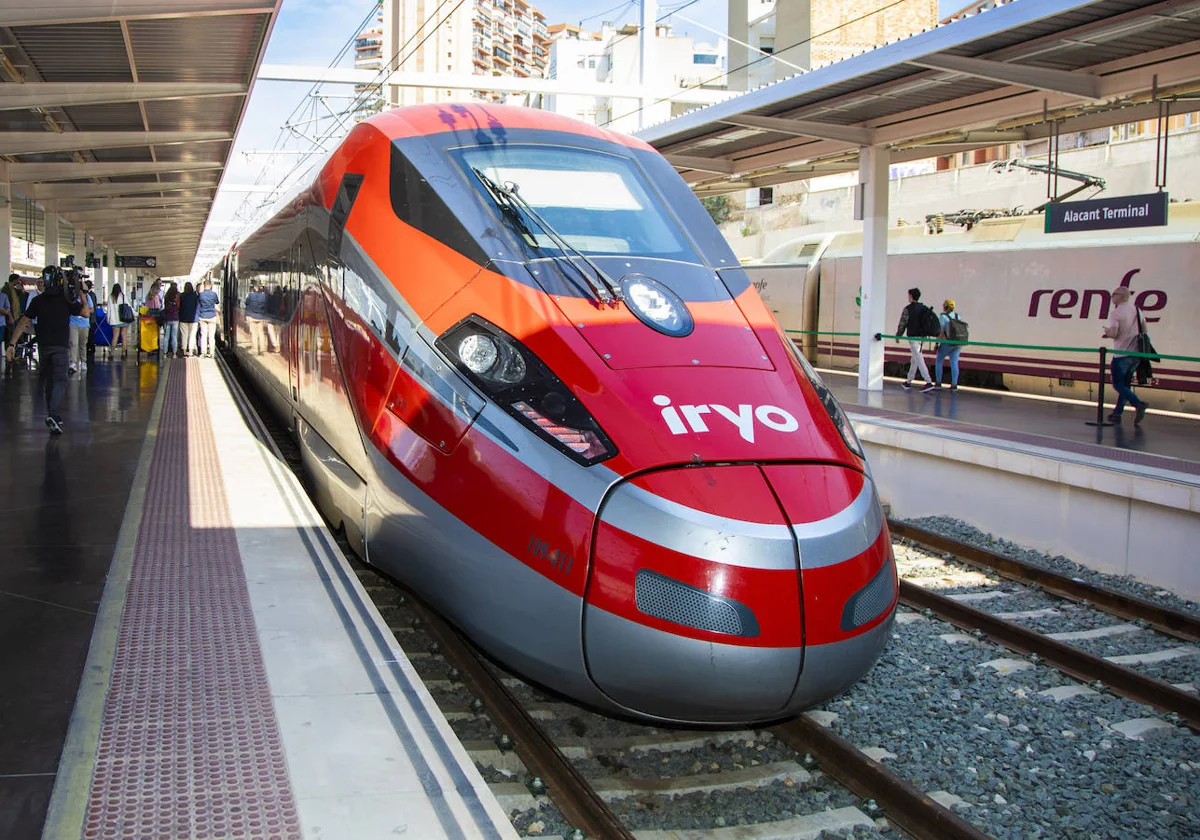Foreign tourists account for half of all train travel bookings to main destinations in Spain
4 min read
Edurne Martínez
London
Monday, 3 June 2024, 22:35
The boom in tourism following the pandemic, in addition to competition in the rail sector in Spain, has boosted train ticket sales like never before. Ticket sale platform Trainline, founded in the UK but with a presence in Spain for the past three years, sold 22% more tickets last year with a value of over 6.16 billion euros, with a turnover of 462 million, 21% more than in 2022.
“Spain will be the country where the train will experience the greatest growth in Europe in the coming years,” said Trainline CEO Jody Ford in a meeting with journalists at the company’s headquarters in London. For his company, this level of growth is “very good news”, as it will lead to greater use of its app. Currently, Trainline’s share of ticket sales in Spain on the main high-speed lines is between 8% and 13%, a percentage the company expects to continue increasing “as the number of passengers boarding the train grows”.
The explosion of tourism in Spain after the pandemic is also changing the way visitors move around. To such an extent that, according to data compiled by the platform, almost half of the tickets on trains to the main high-speed destinations are purchased by foreign tourists. In fact, there is a particularly interesting route for those visiting Spain: the Seville-Barcelona route which has a 63% level of reservations from those visiting from abroad.
American boom
40%
Tourists from the USA
In 2023 Spain registered eight million visitors from the USA, a 40% increase. Latin Americans increased by 30%, according to INE data. These long-haul tourists tend to book longer stays with inter-city travel pre-booked at origin.
In other words, six out of every ten journeys between these two cities are made by international tourists who cross the country by train on their holidays. Equally relevant is the share of the Malaga-Barcelona route, with 42% of bookings made by foreigners, or the Madrid-Seville route, with 40%. Below this level are the Madrid-Cordoba (32%) and Madrid-Malaga (29%) routes. Even the most popular high-speed route in the country, Madrid-Barcelona, has a 26% foreign share, that is, one out of every four bookings is made by an international tourist.
The company’s CEO pointed out that tourism in Spain is undoubtedly a boost for train ticket sales and that it will increase in the coming years, but the real revolution and where his company is focused is on local travel, with a change in the mentality of the country’s own population, which is increasingly “getting out of the car and plane to take the train for its comfort, sustainability and ease”.
Ford said competition from new entrants is what is “revolutionising the rail sector in Europe”. He pointed out how more customers are benefiting from “more choice, lower prices and more sustainable travel”.
The golden age of the train
Ford said the opportunity to create a “golden age of rail travel” will grow in the coming years as competition from new private operators will continue to rise. Specifically in Spain, the rail market is worth two billion euros, according to Trainline data. In fact, one of the top three routes sold by the platform worldwide is Madrid-Barcelona, with 11% of the market share. The London-Paris and Rome-Milan routes are also in the top three.
Liberating high-speed rail passenger services was first seen in Italy and is being reproduced “in an exact form in Spain”, added Christopher Michau, general director of Trainline in France, who pointed to lower prices and improved services as key points. The gradual diversification of the origin of tourists after the pandemic is also favouring the use of trains.
Foreign tourists
65%
Accommodation bookings
Travellers from other countries accounted for 65% of accommodation bookings in Spain last year.
While before Covid-19 most visitors were European, there is now a notable growth in visitors from America, especially the United States, which in 2023 exceeded by 40% those who visited before 2020, according to data from Spain INE national statistics institute.
These tourists tend to travel with closed packages at origin in which high-speed train trips are promoted to visit several destinations in the country in the week or ten days that they tend to stay in Spain.
A recent report by the Bank of Spain also reveals the percentage of trips that international tourists make in autumn and winter is increasing, and also to areas of the country that have not been explored as much, such as the north. This is a direct consequence of climate change, according to the supervisor, with tourists seeking more moderate temperatures. According to this analysis, the pattern has changed and in addition to coming more during the winter, the number of overnight stays in northern regions of Spain has grown more than in the archipelagos and the south.
International tourists now account for 65% of accommodation bookings in Spain. SiteMinder data reveals that in May, in cities such as Seville, three out of every four bookings (74%) were made by foreign visitors. At the top of the list were tourists from France, Italy and the United Kingdom, followed immediately after by the United States and Germany.


